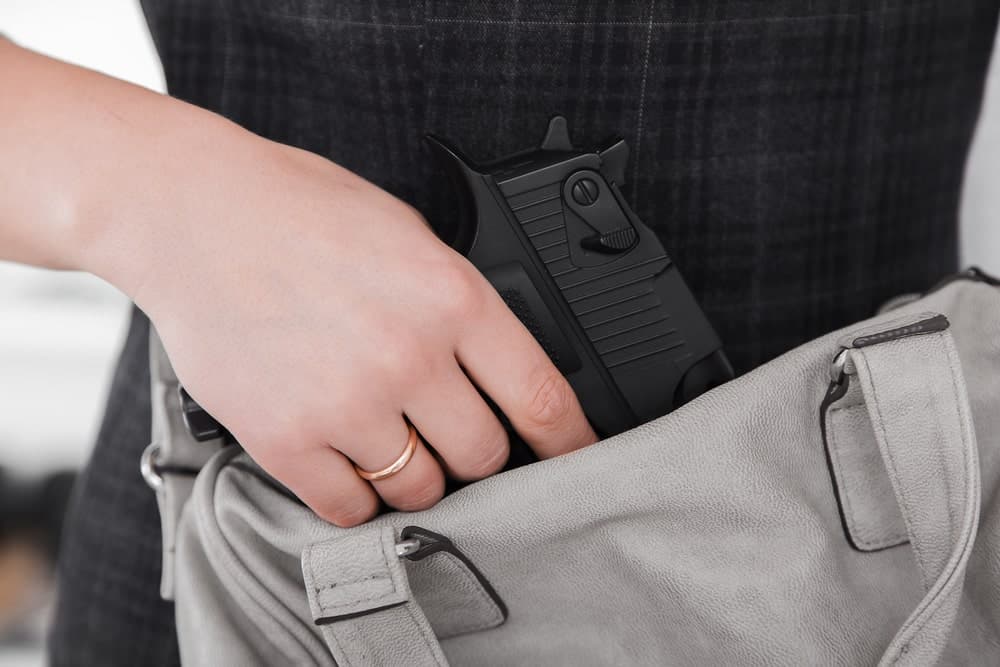Unless you’re carrying a concealed weapon as authorized for a lawful purpose under the provisions of the Firearms Act, is a criminal offence in Ontario — and accompanied by harsh penalties.
If you’re facing a charge of carrying a concealed weapon, it’s important to take measures to mitigate the potential immediate consequences and the longer-term impact on your future.
Most importantly, seek the advice of a criminal defence lawyer with experience in such matters.
What is carrying a concealed weapon in Canada?
If an individual possesses or carries a weapon, a prohibited device or any prohibited ammunition while concealed, he/she may be charged with carrying a concealed weapon.
Most people think of guns with this offence but that’s not always the case. In fact, a concealed weapon could be any of the following:
- Handgun
- Knife/switchblade
- Machete
- Brass knuckles
- Nunchakus
- Pellet gun
Even pepper spray may fall into the category of a concealed weapon.
To be concealed, an individual must purposely hide the weapon so that it would not come to the notice of others. However, this does not include storing a firearm in the trunk of a motor vehicle or a back pocket or purse.
Overview of the offence in the Criminal Code
When considering the offence, it helps to review exactly what the Criminal Code of Canada says.
Carrying a concealed weapon is addressed in the “Firearms and Other Weapons” part of the Criminal Code (Section 90).
90 (1) Every person commits an offence who carries a weapon, a prohibited device or any prohibited ammunition concealed unless the person is authorized under the Firearms Act to carry it concealed.
(2) Every person who commits an offence under subsection (1)
(a) is guilty of an indictable offence and liable to imprisonment for a term not exceeding five years; or
(b) is guilty of an offence punishable on summary conviction.”
Interpretation of the offence as defined in the Code
Carrying a weapon has a much broader definition than having it on one’s person. It may include the weapon being within reach in a vehicle over which you have care and control.
To convict an individual of the offence, the prosecution must prove that the defendant hid an object known to be a weapon to avoid it being detected.
Under the Criminal Code, the prosecution may proceed as an indictable or summary offence (sometimes called a “hybrid” offence), depending on the circumstances and what the prosecution decides.
Actus reus and mens rea in Ontario
For the Crown to successfully convict a defendant on a charge of carrying a concealed weapon, both actus reus (the guilty act) and mens rea (the guilty mind) must be proven.
In other words, in these cases, the Crown needs to prove that:
- The defendant was “carrying” or in possession of an item.
- The item was a weapon, prohibited device or prohibited ammunition.
- The item was concealed by the defendant.
- The defendant intended to conceal the item.
- The defendant knew the item was a weapon, prohibited device or prohibited ammunition.
The burden of proof in criminal cases is high, of course. Each of the above must be proven beyond a reasonable doubt. Often, a seasoned criminal defence lawyer can build a strong case that brings one or more of these elements into doubt.
Defences for carrying a concealed weapons charge in Ontario
The main defences for carrying a concealed weapons charges are the following:
Breach of rights under the Canadian Charter
The Canadian Charter of Rights and Freedoms protects the basic rights and freedoms of individuals. If these rights are violated by law enforcement during your stop, arrest or charge, evidence may be deemed inadmissible and the prosecution’s case against you could collapse.
For instance, under the Charter, you have the right to be free from unreasonable search and seizure. If the police took a weapon from you without observing your search and seizure rights (for instance, no warrant), it can be a strong defence as we will file to have the evidence excluded.
The same applies to breaches of rights such as the right not to be arbitrarily detained, the right to be informed of reasons for detention or arrest, and other rights under the Charter.
Lack of weapon possession
Unless it can be proven that the device was a weapon, prohibited device or prohibited ammunition — and the defendant had knowledge and control over it — the prosecution’s case may fail because actus reus cannot be proven.
An example might be a switchblade found in the trunk of a friend’s car that you were driving. It would be difficult for the prosecution to prove that you had knowledge and control of the weapon.
Lack of intent to conceal the weapon
The prosecution must prove that you intended to conceal the weapon (mens rea) and that it was a premeditated and deliberate action. Otherwise, you cannot be convicted of the offence.
Punishments for carrying a concealed weapon in Ontario
As a hybrid offence, the punishments for carrying a concealed weapon vary greatly depending on the circumstances.
If prosecuted as a summary offence, the accused faces a maximum of two years less a day in prison and/or a $5,000 fine.
As an indictable offence, the accused faces a maximum of five years’ imprisonment. The case may be heard by a provincial court, a superior court judge alone or a superior court judge and jury.
If you have been arrested and charged with any criminal offence in Ontario, contact an experienced criminal lawyer at Affordable Defence for a free case evaluation.

